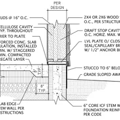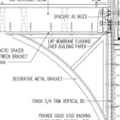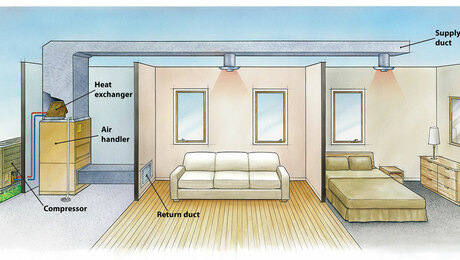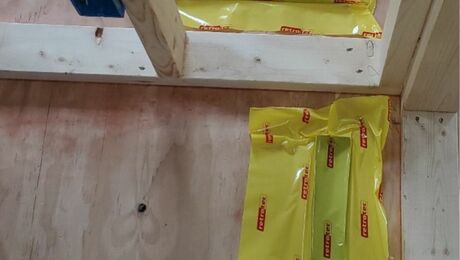Air Sealing an attic
Getting ready to blow some insulation in my attic. the house was built in the 50’s and walls/ceilings are the old 1/4″ gypsum w/ full plaster job on top. So I understand sealing holes in plates , light boxes and such, how much more air sealing can/do I need to do?
GBA Detail Library
A collection of one thousand construction details organized by climate and house part









Replies
The easiest way to find remaining leaks is by pressurizing the house. You do not need a blower door for this, just get a typical 24" box fan and find a way to put it in a doorway with the rest of the opening sealed... cut a hole in a door skin and use a bunch of masking tape to goop it all together, etc. If you do this in the winter, when the house is warm and the attic is cold, you will easily feel leaks with your hand. Work your way around the tops of all the interior and exterior walls, around the plumbing pipes, and everything else you see.
If you have any punks left from the 4th of July, they work real well at detecting drafts, too.
Aaron,
It's hard to provide specific advice, because we don't know how experienced you are at air sealing work. If you follow David's advice, you might find that two or three box fans work better than one.
Here are some common air leaks you didn't mention:
1. Chases around plumbing vent pipes and chimneys.
2. Chases around ducts.
3. Weatherstripping around access hatches and pull-down stairs.
4. Leaks between bath exhaust fans and the plaster ceiling.
Every ceiling is different. The best results occur when the air sealing worker has a blower door operating during the air sealing work.
Thanks guys. I guess my question was more geared this way. If it was new construction, I'd be airsealing the drywall before I hung it, at the ceiling/wall connections. But with full plaster on, how much do I need to worry about these points, joints in the drywall, etc?
Most leaks in interior walls are going to be at the connection between the subfloor and the interior side walls.
In the ceilings, leaks are going to be around light fixtures, electrical drops, drop soffits, etc.